Dominique Lelys and Artumes: Taking on the spirit of Arnys
By Tony Sylvester
Roughly three years ago I wrote a piece for the Drake’s in-house magazine Common Thread. Given a free rein on any subject I wanted to talk about, I’d started ruminating on the similarities between French and English style, one of the prompts for which had been the recent announcement that Drake’s would be launching ‘a store within a store’ at Beige Habilleur, in Paris’s 16th arrondissement.
Beyond the obvious benefits to both brand and store, I started thinking about both the commonalities and differences in menswear either side of La Manche. For despite the historical focus on Italian, American and British style, relatively little time - in the English language at least - had been spent on the French approach to sartorial matters.
Times have changed a lot since then. The French magazine l’Etiquette is available in English these days, and last year Reginald-Jerome De Mans published Swan Song: an entertaining collection of essays on French makers and clothing establishments. Witty, romantic and often pessimistic (with a suitably Proustian allusion in its title) De Mans, an American who spent time in Paris as a student, ruminates on the disappearing world of French craftsmanship and style.
As soon as the book landed, I cracked it open to the chapter on Left Bank institution Arnys (above). Keener readers will already know of the now defunct brand; Simon covered them in the early days of PS, and they cropped up in my article last year on artists’ clothing.
The brand was swallowed up by LVMH-owned fancy-shoe providers Berluti back in 2013, a decision perhaps more motivated by their enviable retail position on Rue De Sèvres rather than their sartorial output, yet Arnys still holds a firm sway over menswear enthusiasts.
The brand fascinates me greatly. I was a little late to the party, missing out on the store in its heyday, so trips to Paris often involve wild goose chases in pursuit of vintage pieces or nuggets of information to help me flesh out my knowledge (and collection). This past Spring, I was lucky enough to sit down with one of the men responsible for a great deal of the visual appeal of the Arnys, the head designer and director of style for 30 years, Dominique Lelys (below).
I’m clearly not the only person besotted with the world of Arnys. One look at the stratospheric prices for their signature pieces on resale bears this out. So, how did they gain such a reputation?
Farid Chanoune’s bible on French style, A History Of Men’s Fashion, makes just one fleeting mention of the brand, referring to them as “a purveyor of French-style English fashion since the early 50s” and no more. Considering how much space he devotes to others long forgotten and sunk into obscurity, this strikes me as odd. Does the veneration of Arnys not run as far back as I’d been led to believe?
The store was opened in 1933 by two sons of a Ukrainian tailor, Leon and Albert Grimbert. Their arrival in the heart of the Left Bank coincided with their neighourhood’s reputation as the outpost of the new class of intellectuals, writers and artists. This was thanks to cheap rents and a café-based salon des idées culture on the surrounding streets.
The clothes sold at Arnys contributed to this new cultural force, helping in some part to give rise to the ‘BoBo’ (Bohemian Bourgoisie) look and mindset, in direct contrast to the more mainstream ‘BCBG’ (good style, good class) attitude on the other side of the Seine (below).
Post war, one of the many cultural luminaries Arnys dressed was actor Philippe Noiret (above). His traditional yet eccentric dress caught the eye of a young student, Dominique Lelys, who ventured into Arnys hoping to emulate his sartorial hero on his meagre income.
“I was working at Ralph Lauren doing their windows, as my background was interior design.’ Mr Lelys explains. “When I quit architecture school, I went to Hermes, but we didn’t really match.
“I had met Jean Grimbert (son and nephew of the original founders) because I was already a customer at Arnys, and he said he wanted to see what I was doing. I showed him my designs and he said ‘please make me a tie collection’. So I started with them - it was 1983. After that he decided to hire me as a director of style.”
“My style is very personal. When I was 10 years old my father, who was very keen on languages, decided to send me to England for a year. So I went to Barnstaple, in Devonshire, where I stayed with a family. I went to school, I learnt to play cricket, I learnt to play rugby, which I was very fond of. I understood very quickly the understatement, the English mentality and sensibility. I was very fond of this typical old England with its tweed and its kilts.
“I am French, and my father was very very French. So when I grew up he told me, you can keep what you’ve learnt but you have to adapt it to your nationality. So I made a mix: I know all the codes, sometimes I break them, sometimes I respect them. But I try to be what I am: A French man who went to school in England, who has two cultures. I have English friends and Scottish friends, but I’m too busy to travel these days. I think that England is gone.”
It is easy to see what impressed the house boss in Lelys’ eye for design - he gave a distinctive Escher-like feel to his repeating patterns in autumnal palettes, with motifs resonant of the good life; hunting, drinking. The ties became one half of the story for the renewed, revamped energy of the brand.
The final piece of the puzzle was an odd jacket in their archives: the so-called Forestière, originally made for the French-Swiss architect Charles-Edouard Jeanneret, aka Le Corbusier.
“The first Forestière for Corbusier was quite different to the model that everybody knows,” Lelys says, upending all the wisdom I’d heard about the jacket’s history. “It had padding and was quite straight. I saw one prototype when I began to work at Arnys. We decided to take the padding out and to lower the shoulder, just to see how it worked.
“It was an immediate success. Once we relaunched in the eighties, it became the best seller for Arnys, accounting for 50% of their sales. When we saw that this jacket was successful, we decided to make other offerings in the same vein and say “let’s go”.
And go they did. By the late nineties Arnys catalogues (above) were full of wild and wonderful pieces inspired by vintage military and equestrian coats, and all sorts of aristocratic clobber recalling a pre-revolutionary ancien régime mentality (for a reference, consider the painting above of Baron de Thiers).
It was unique, wonderfully eccentric and often a little daft.
I was speaking to Lelys in the home of his latest venture. We’re sitting on tweed sofas in the offices of Artumes & Co, a young French brand taking some of its cues from l’esprit d’Arnys but with a slightly greater focus on hunting.
The founders Thomas and Nicholas Drach’s father ran the English shooting brand Holland & Holland for their French paymasters Chanel in the nineties, and that country-sports influence is front and centre in Artumes. It was almost inevitable that Lelys teamed up with them.
“My silk maker said to me there is a company called Artumes & Co who do exactly the same thing as you do, and he showed me one design that looked a lot like one I had done for Arnys,” says Lelys. “So I called them up…now we are friends,” he laughs.
“When Arnys sold to Berluti, many of the old makers just carried on making the same designs that I had made with them. But that legitimate heritage belongs to me, so I’m very lucky to have found this world of Artumes to continue. I have brought my know-how to them, but they also have their identity. So I manage both and it matches very easily. I am home.”
Lelys is more interested in continuity than simple repetition of old formulas, so the two developments he made at Arnys are updated here in new, adapted forms.
His trademark patterns are present in the Tourdesoi (above), a series of lightweight scarves taking on the same role as his old tie range - brightening outfits and creating the visual interest between the lapels, albeit in a relaxed manner more reflective of the new brand’s ethos.
In lieu of the Forestière, he has developed the arTeba. Based on the Spanish hunting jacket the Teba, it has been recut, nipped at the waist, cut higher at the armhole and longer in the skirt. In checked tweeds and bright corduroy, it’s a natural heir in look and mood to the Forestière’s considerable charms.
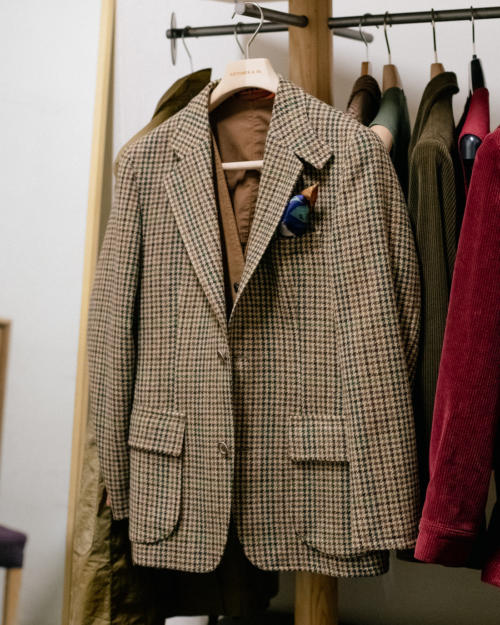
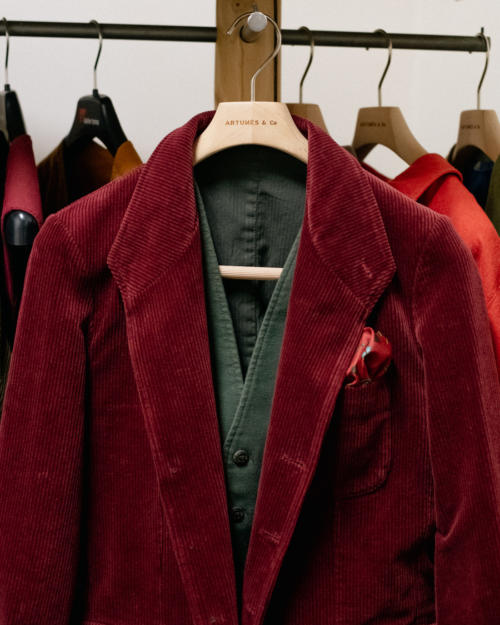
Unfortunately for me, its narrower, slimmer cut is not a good match, as part of the Forestière’s personal appeal was its oversized ‘anti’ fit.
I leave with a notebook full of acquired wisdom, but without a replacement model for my beloved Forestière - something I had hoped to find at Artumes.
Hopefully another of Paris’s more interesting stores will be able can help a little in that regard. More on that next time.
Photography: Alex Natt. Below, Thomas Drach (left) and Dominique Lelys


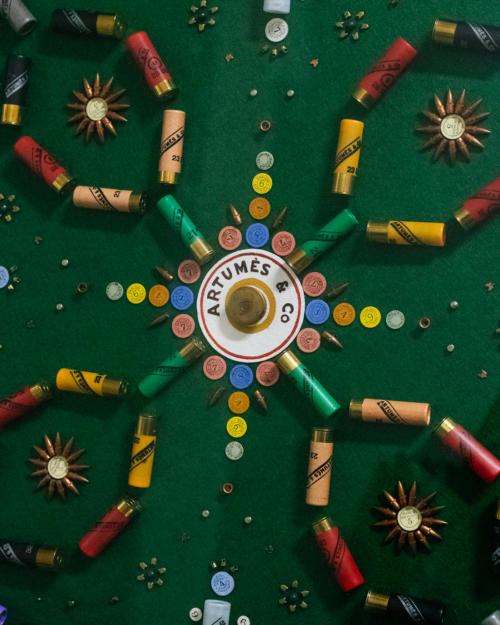
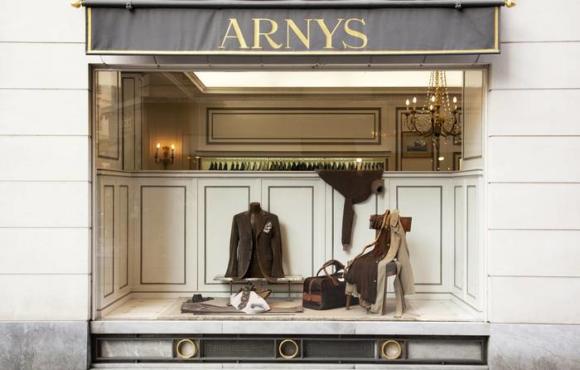
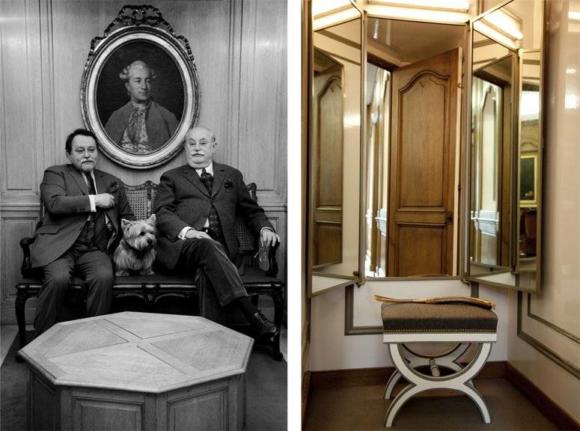
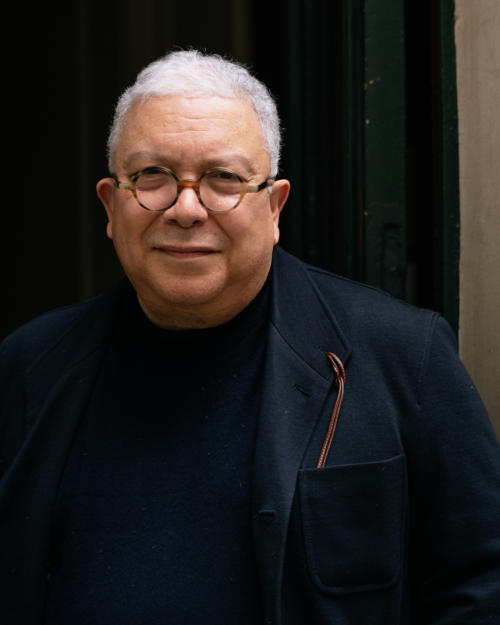
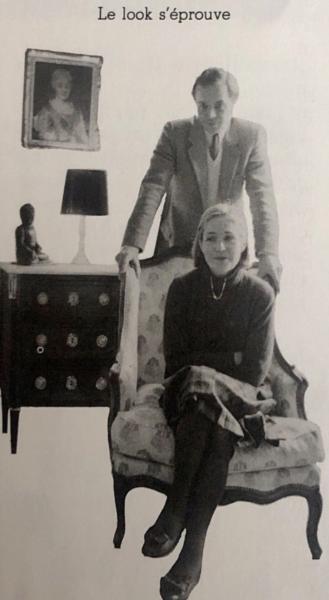
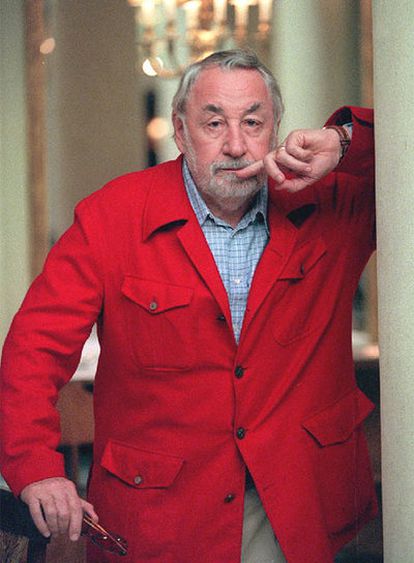
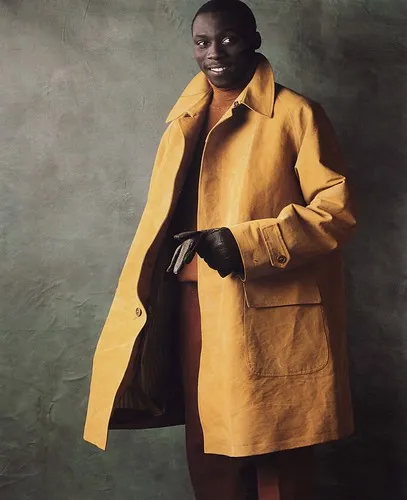
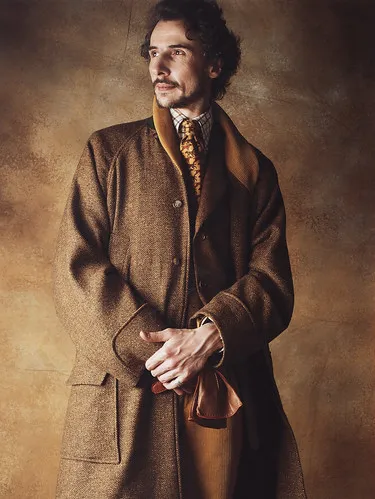
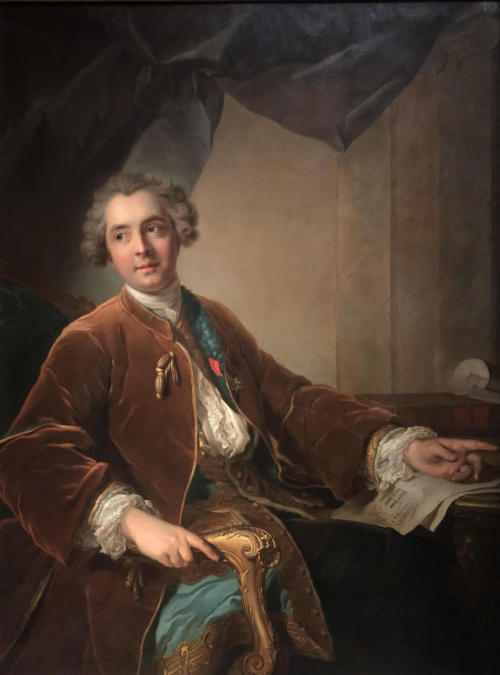
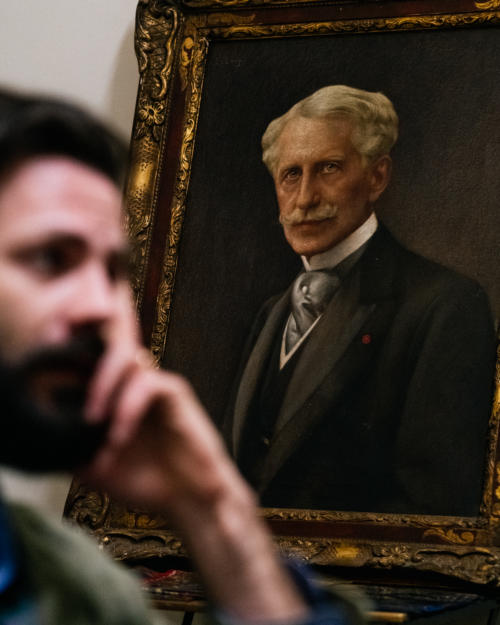
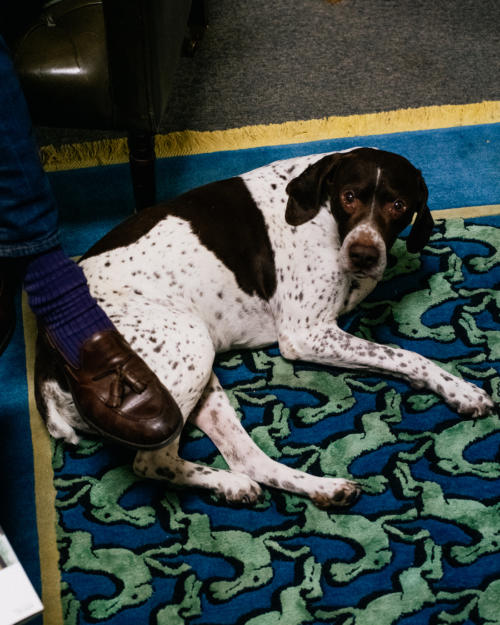
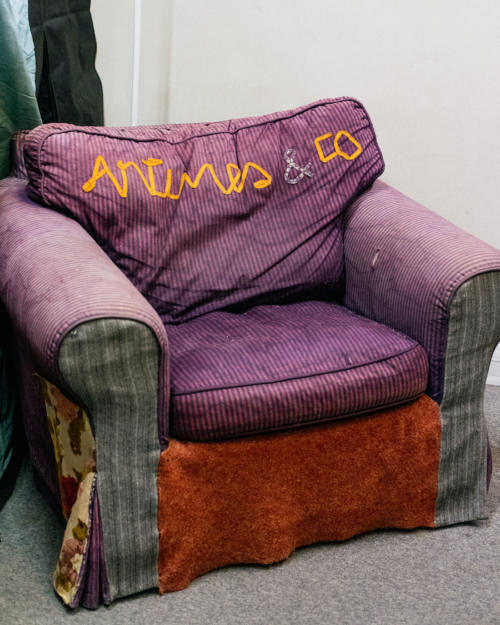
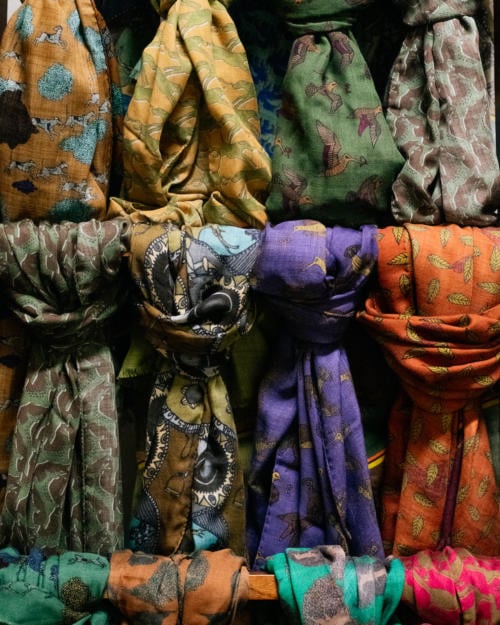
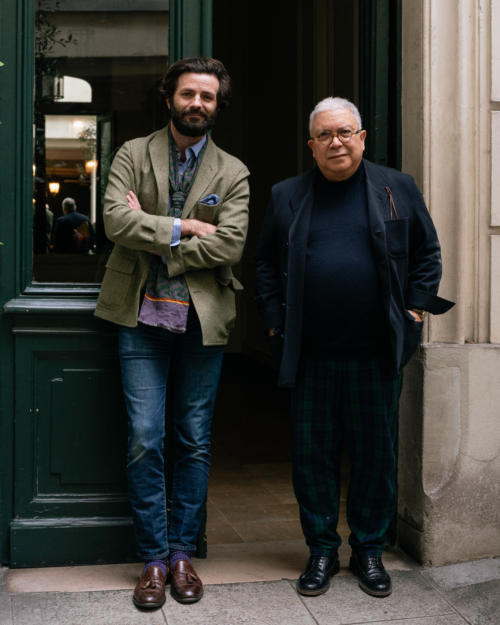
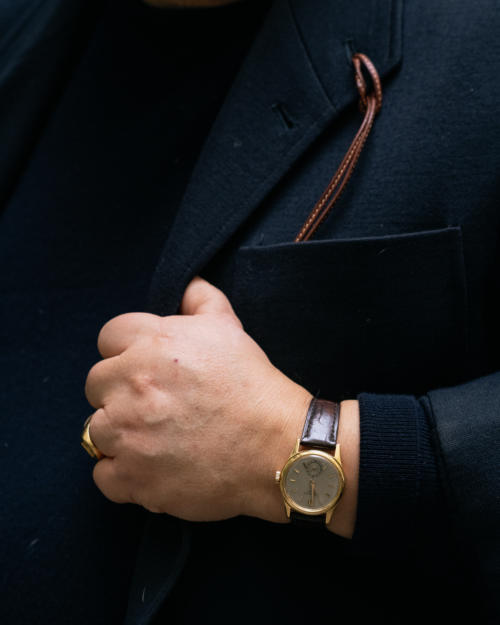


























A really wonderful post on a brand which I do admire, because of its style, and lament, because of its absence since nearly a decade. I didn’t know about Artumes. Nice to read about!
Excellent report. Thank you.
What’s that lovely watch in the last picture?
It’s a Patek Philippe. Not sure of the model, but could be a vintage Calatrava.
Thanks.
Er, old England and its kilts? I hope your readership doesn’t extend as far north as Scotland.
I think we can forgive Dominique some international lack of precision there
That reminds me of the American on the Moto Guzzi forum who was argued furiously that England was an island.
The absence of French menswear thinking is something I’ve been pondering for a little while. Any thoughts on why their influence has diminished so much in the last half century?
I’m sure Tony will have his views, but I’m sure some of it has to do with the lack of either big international brands like the US, and lack of manufacturing as still remains in Italy
Enjoyed the piece which increased my knowledge . Do you think part of the issue is the lack of a distinct ‘French’ style in menswear?
I don’t think it necessarily is, myself. I think it’s more that British, then American culture has been so widespread, plus the points above regarding industry. Often it’s about how much exposure and amplification local styles get
Absolutely not a lack of distinct style – I feel there is a resolutely French look, especially apparent if you spend anytime looking at the older gentlemen on the streets of Paris. It certainly riffs of English style, but is a little more colourful, and worn looser with more of a relaxed air to it. I talk a lot about the roots of this in the upcoming (delayed) feature for Drake’s Common Thread.
Lack of manufacturing options seems key to me indeed.
If you put aside all workshops that work entirely for the very big french luxury brands – if not integrated within these luxury groups – you are left with very little to work with.
At Artumès & Co, we try to work as much as possible with french manufacturers but more often than not it is not a viable option : some just ride the « made in France » label but the know-how isn’t actually there, some do amazing work but working with them is just painfully complicated and/or expensive.
As a result most of our suppliers are in western europe, yet not so many in France. Italy of course, but even post brexit I have an easier time working with a few british manufacturers, whether english or scottish.
Also labor costs are high in France, amongst other difficulties for small and midsize companies, and if I look back at all the suppliers we have managed to work with in France in the past decade, probably half of them have disappeared, even though they had real know-how and were quality craftsmanship.
Its an interesting question. Perhaps there’s a more insular approach, and French brands tend to be comfortable with their own domestic market rather than looking overseas say as much as English or Italian brands…
As the writer of Swan Songs: Souvenirs of Paris Elegance, the French menswear memoir Tony name-checks, I take this opportunity to recommend my book for views of what French men’s style was, and for a lot of information about Arnys. I do note, Tony, that I’ve lived in Paris for various lengths of time during my life, including a much longer period as an adult well after my student years.
From your granular knowledge of French brands, I assumed it was for a sustained period of time, thanks for the clarification..
Please, I must know- to what is the leather cord attached? I assume not a watch as the gentleman is wearing a wristwatch. I am consumed by this question. Want to make yourself absolutely fascinating to women (or at least this woman)? Attach a mysterious object to your buttonhole with a lovely leather cord! I will be bereft if the answer is that there is nothing at the end of it.
I believe it to be his glasses case, but I’m not certain. A lot of guys in Paris wear their keys in a leather cloche on the end of a similar leather cord, but that doesn’t quite seem like M. LeLeys’ style.
Close enough… it’s actually a magnifying glass that he ties to the end of the leather cord 😉
That’s so cool.
It is an E.B Meyrowitz magnifying glass which I always carry.
Many thanks Dominique. I’ve seen the glass – it’s beautiful
I split my time between France and the US and I was immediately drawn to your mention of Berluti and shoes. I know the theme of the article is not shoemaking but just thought I’d mention that French shoemaking seems less threatened than tailoring. There are numerous good brands popping up all the time, fairly similar to the US. Even the business of “creating” patina is very active – outside the big cities you can find this. In Angers, the city nearest to me, there’s a shop whose main business is essentially “custom painting and burnishing” shoes and sneakers. Anyway Berluti gobbled up the business of an excellent Loire native shoemaker Antony Delos, who still runs his workshop in Les Rosiers-sur-Loire. Bespoke shoes at this level are far beyond my own price/value justification, but I understand from Shoegazing and other experts that the artisanship is undiminished.
As an aside, arguably the premier volume producer of RTW shoes is JM Weston and I managed to find an impeccable pair of their wholecut Chelsea boots for 20€ at one of the local flea-markets in my size (list price nudges 1,000€). Bargain of the century – I still have a smile on my face about it. Vive la France.
If anyone wants to know more about Dominic Lelys, there was an article about him and his work in the French menswear magazine Monsieur quite recently.
If anyone ist looking for a Forestiere style jacket, check out the Borestiere or Bores by Parisian brand Chato Lufsen.
@ Parker. Very much appreciate the Chato Lufsen recommendation. Nice selection of vintage pieces many from Arnys. Hard to know about these small shops stateside without PS readers help. Thanks much.
This article evokes an atmosphere. It was really interesting reading with both facts, musings, history, a bit of art and lots of fine pictures, thank you. As a reader one hopes that the author will finally find his cherished forestière in the end. Actually, when you see that Arnys only evoked this world for such a short period of time, you can’t help but notice that everything is very ephemeral in the world of menswear. I myself am a little sad about Drakes’ metamorphosis during the last years. For me, that brand was about good ties and scarves and some other accessories, but I had lost track of them for a couple of years. Recently, I’ve walked into Drakes’ new store on Savile Row only to discover that a lot of their current offer does not appeal to me at all.
Apologies, off topic, but are you going to bring back your denim shirt to the Shop?
Not the Everyday Denim, no, but we should have more of the Lighter Everyday Denim coming in
Thanks Simon. Great Shirts.
I, too, want to know what’s at the end of the leather strap affixed to Dominique’s lapel on one end. Please, Simon, will you ask Dominique Lelys, for Margaret and me? It may seem cheeky, but you can blame impertinent women for the transgression.
Such a shame Arnys is a defunct brand. Simon, I understand what you mean about Artumes & Co.’s arTeba jacket not being a suitable replacement for your Forestière. I would still like to see photos of how you look in the arTeba. You did try it on, didn’t you? In fact I hope you tried on multiple pieces while at Artumes & Co. It doesn’t sound like we’ll get to see many Arnys pieces modeled in the blog, given their stratospheric prices at resale.
I love the artwork at the top of the blog post. Understated wit!
Just to clarify, I didn’t write this piece, Tony did. But I can see if he has pictures in the arTeba, sure
Unfortunately I did not, I would like to try a larger size than the 56 they had in the showroom, to see if there is a way to make it work for me. For comparison, I wear everything from a 52 to a 58 in old Forestieres, so the ArTeba is a very different beast fit wise
Great, thanks
Thank you for clarifying that, guys. Please more photos, including profile shots and pictures of you in motion, if possible. Also bright, natural, but indirect light. Thanks!
Regarding what is at the end of Dominique’s leather cord : a pretty magnifying glass!
regarding the fit of the arTeba, we didn’t have more than a 56 for Tony to try, but I’m confident we could recreate the slack aspect of the Forestière with a 60. We also do the arTeba in MTM so there is plenty to work with to make it more « Forestière like » without betraying Dominique’s design.
Interesting. It always strikes me as quite odd that France is home to the biggest luxury brands but contrary to Italy, which also has them, lacks the non flashy quality brands covered on PS.
France has never been quite the same home of menswear, which makes a difference. Also, having manufacturing means we’ve seen a lot of Italian brands come out of those factories in recent years – whether it’s Bresciani or Belvest, a lot of them have moved from just manufacturing to setting up their own retail. I think that accounts for part of it too.
De Bonne Facture, Lacoste, Faconnable, Charvet, Maison Courtot, Hermes, JM Weston; all brands popularly worn by Frenchmen.
Some better known outside France than others I guess.
“I think that England is gone”. Interesting.
I think he ment for him, as he is unable to travel nowadays 😉
Took a moment to read a review of Swan Songs. Review written by G Bruce Boyer who is described as “…author, essayist and all around mensch.” Gotta love it. Very much enjoy the worlds opened to me by PS. Great essay Tony. And thank you Simon.
Oh what an interesting article this was.. Thank you first of all maybe I can contribute quite a bit to the French English sartorial marriage here.
I have worked for Hermes Holland and Holland and John Lobb and hope I can say I know quite a bit from either side of channel therefore…
Simon is as usual spot on explaining why french tailoring or makers never became so popular in other countries its simply the fact that (despite being the fashion industry juggernaut and this will not and dare I say never change because they are a perfectly oiled machine) ninety percent of all fashion goods they sell are made in Italy RTW clothing shoes etc
FRENCH clothing manufacturing ( the likes of Hermes LV and Chanel are making still a huge amount of their leather goods at home ) has been largely made in Italy for decades hence the Italian makers always were in the driving seat here.
Having said all this small French brands are thriving and alive and kicking Beige Habilleur Camps de Lucas The amazing Husbands ! the equally charming fascinating Artumes. And and and…..
The French fascination for all things English is well documented and goes back more than 200 hundred years.
So what is different ? Between the look anglais and the British rustic boy
One member of a famous French owner family explained this with one sentence to me one day ” it’s quite simple we like their rustic charm their look anglais but we want to make it perfect more refined and more colourful more playful and more dandy a bit more nonchalant” and a bit more je ne sais quoi…”
The lack of industrial strategy and market gain makes french menswear with all its facettes differnet and less popular but the eye for finesse charm beauty and sometimes playfulness is unrivalled and in this way Vive La France and …..vive the good old English Bulldog.
Ps the lovely cartridge board is a modern beautiful version that was sold once in the now defunct Holland and Holland store.. and the clothing of Artumes is just gorgeous…..
Whenever I go shooting in the UK with my family and a few other brits, there are always comments about the way we dress in these occasions.
Which has always amused me since, before Artumès & Co, our attire was either fully british or at least heavily inspired by british country attire.
Maybe that speaks to the fact that a non negligeable part of « french style » in menswear lies more in the way to combine and live the garments and accessories from elsewhere rather than in pieces that are, per se, of « french style »?
That would relate to your mention of « je-ne-qais-quoi ». I guess « je-ne-sais-quoi » maybe is the closest french equivalent of the italian sprezzatura. Maybe.
I recently went to Paris and I’m not sure if I’m seeing the French style persay or just a number of svelt French men looking good in anything. I mentioned to my wife my dismay that I was seeing the same type of outfits in NYC and how I was hoping to get more style cues. Perhaps the issue was that I was just in the wrong places.
On the other hand I found it interesting that one of the oldest Parisian (if I’m incorrect, excited to be corrected) menswear retailers, Berteil is selling a whole slew of wonderfully colorful wares. I too am on the hunt for an Arny’s Foresteir (but being a 46L in America, I’d have an easier time finding El Dorado), and their Alexander jacket comes close. https://www.berteil.com/en/jackets/2346-mountbatten-velours-cotele-marine-158863.html
On the other hand another French brand that I fell in love with, Husbands, seems to be keeping that wonderful Belmondo asethetic with slender black cut suits and 70s lapels. Once again as someone built as an out of work superhero, I can only appreciate with my eyes.
Of course there is https://jonas-et-cie.fr/ Jonas et Cie whom is said to make suits for Macron and if I’m reading correctly, their prices for MTM are highly affordable.
Of course I had to buy this Made in France tie as it was the most French Tie i’ve ever seen: https://www.cinabre-paris.com/en/red-card-ties/1564-zizou-tie.html
I do love this dichotomy of frenchwear, either colorful in your face with a colorful beret or a more subdued slender and dark. Then there’s the workwear which is in a class of it’s own. I’ve always dreamt of finding a way to combine the three big producers of chore coats together to create one French workwear jacket.
Good morning and a great article